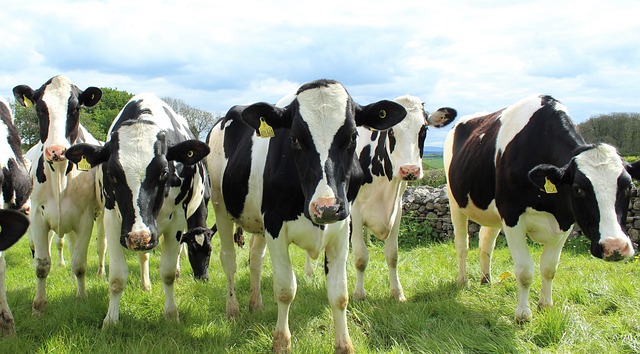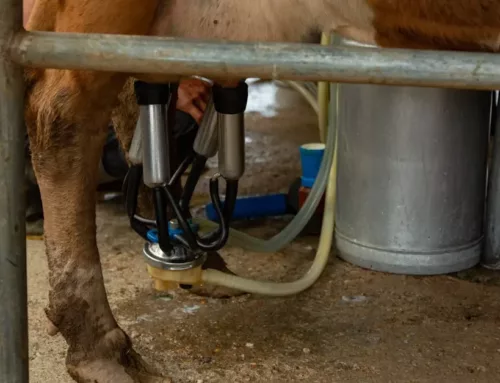The Future of Livestock Data Management Technology

Technology is bringing significant changes to the livestock industry, and livestock data management has emerged as one of the vital tools for improving animal welfare, productivity, and profitability.
With the increase in demand for high-quality food products and sustainable agricultural practices, the future of livestock data management technology is promising. This blog will discuss the potential evolution of livestock data management technology and its impact on the industry.
Upcoming Developments in Livestock Data Management Technology
Big Data Analytics
The livestock industry generates massive amounts of data, and it is difficult for traditional data processing methods to analyze these large and complex data sets. So, big data analytics helps livestock producers get better insights more efficiently.
Here are a few ways big data will impact livestock management:
Disease management
Big data analytics can help monitor disease outbreaks and identify potential risks. Livestock producers can further use the information to design control strategies for disease prevention, thereby reducing the spread of diseases and improving animal health.
Breeding
You can use big data analytics to identify animals with desirable traits, such as adequate milk production or disease resistance. This can help you make better breeding decisions, improving livestock populations’ genetic diversity and performance.
Feed Efficiency
This incredible management technology will make monitoring feed consumption and adjusting feed rations easier. This would reduce waste and improve efficiency. It’ll also help livestock producers reduce their environmental impact and improve profitability.
Supply Chain Management
Storing and analyzing such detailed data can help monitor the entire supply chain, from farm to table. It also enables livestock producers and food companies to track each animal’s journey and ensure that they meet regulatory and ethical standards.
Internet of Things (IoT)
The term “Internet of Things” (IoT) refers to interconnecting devices that collect and share data over the Internet. IoT devices such as sensors, cameras, and drones will enable livestock producers to make informed decisions based on real-time data.
There are many potential applications of IoT in livestock management, including:
Health Monitoring
IoT sensors can monitor animals’ vital signs, such as body temperature, heart rate, and respiratory rate, and alert livestock producers to potential health issues.
Feed Management
These devices can track animals throughout their lifecycle. They retrieve the feed consumption of each animal and help ensure they receive the right amount of nutrition.
Environmental Monitoring
You can monitor environmental conditions such as temperature, humidity, and air quality with the help of IoT devices. Additionally, you can adjust ventilation systems accordingly to ensure optimal animal living conditions.
Blockchain Technology

Blockchain technology is a decentralized database that records transactions securely and transparently.
Here are some ways in which you can use blockchain technology in the future of livestock management:
Food Traceability
In today’s tech-enabled world, consumers want to know every detail about the products they purchase. Blockchain can create a transparent and secure supply chain for livestock products by recording each animal’s journey. It can provide consumers with more information about the origin and quality of the products they purchase.
Animal Welfare
By creating a transparent record of each animal’s history, blockchain can help prevent animal cruelty and ensure that livestock producers follow the best animal welfare practices.
Smart Contracts
This unique technology will automate contracts and payments between livestock producers, food companies, and other stakeholders in the livestock supply chain. This can reduce transaction costs and increase efficiency, improving profitability for livestock producers and food companies.
Cloud Computing
Cloud computing refers to the delivery of computing services over the Internet. The future of livestock data management technology will see the use of cloud computing to store and process data.
Here are some great uses of cloud computing:
Data Storage and Management
Livestock producers will now have access to a centralized platform for storing and managing large amounts of data. This can include data from IoT devices, sensors, cameras, and external sources, such as weather forecasts and market trends.
Remote Monitoring and Control
Installing this technology can enable livestock producers to monitor and control their operations remotely. This may include adjusting feed or water supplies and monitoring environmental conditions such as temperature and humidity.
Collaboration and Sharing
Livestock producers and researchers can collaborate and share data and insights. This will facilitate the development of new applications and innovations that improve livestock management.
Artificial Intelligence (AI)
Artificial intelligence (AI) can help analyze vast amounts of data from multiple sources, such as environmental monitoring sensors, animal health records, and genomic data. AI can identify patterns and trends in the data that humans may miss.
Here are some ways AI will shape the future of livestock management:
Precision Livestock Farming
AI can monitor and analyze individual animal behavior, including movement patterns, feeding and drinking habits, and activity levels. This data can detect early signs of disease, injury, or distress, enabling early intervention and improved welfare.
Automated Breeding
This intelligent technology analyzes individual animal genetic information and suggests suitable breeding programs to optimize genetic diversity and enhance overall performance. As a result, animals are healthier and have desirable traits such as increased milk production or meat yield.
Feed Optimization
Utilizing AI as part of your farming practice lets you analyze data from individual animals and predict their nutrient requirements based on age, weight, and other factors. You can use this data to optimize feed formulations and reduce waste, increasing efficiency and cost savings.
Quality Control
You can use AI to analyze data from slaughterhouses and processing facilities to ensure that products meet quality standards, reducing waste and improving customer satisfaction.
How Can AgBoost Help You?
AgBoost provides a platform for livestock producers with a comprehensive set of features. Here are a few of them:
- Genetic Analysis technology simplifies complex DNA data, presenting it in a comprehensive and convenient format for easy selective breeding decisions.
- The innovative Sire Link software enables you to closely monitor your herd sire and their progeny for multiple generations. With this technology, you can avoid inbreeding and identify your top-performing animals.
- Herd Management Software is the perfect solution for livestock producers looking for technology that simplifies herd data tracking.
Using technology to optimize your farming strategies will increase efficiency and profits. At AgBoost, we also offer an exclusive marketplace for customers to easily list and sell their products, services, animals, and more.
Whether you’re interested in optimizing livestock breeding or improving management practices, our data-driven solutions can help you achieve your goals. Contact our team today to learn more.


